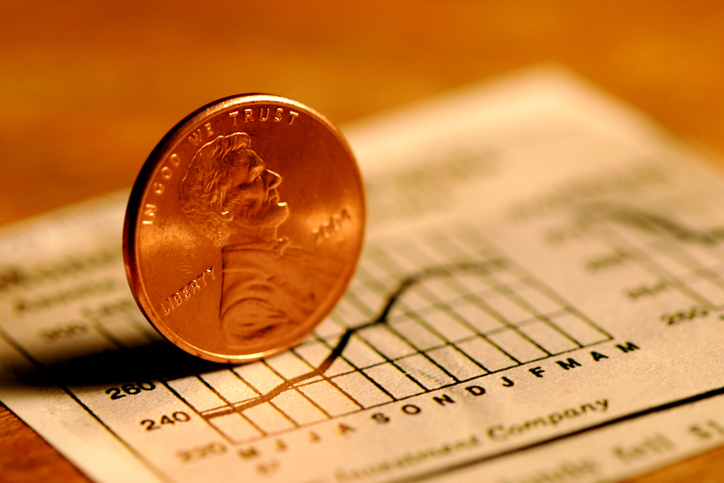Tax Breaks for Dependent-Care Expenses
For most couples, using money from a flexible spending account offers a bigger tax break than the child-care credit.


My husband and I both work and have more than $20,000 in annual day-care expenses for our two children. We have dependent-care flexible-spending accounts at work and contribute $5,000 between the two of us. Can we also claim the child-care tax credit for our additional expenses? If not, is it better to use the money from the dependent-care FSAs or to take the child-care credit?
Because you have two children in day care and pay more than $6,000 a year for their care, you can use the $5,000 from your flexible spending accounts and also claim the child-care credit for up to $1,000 of expenses.
Unless you have a very low income, it’s generally better to use money from your dependent-care FSAs first. Contributing to a dependent-care FSA generally gives you a bigger break than taking the child-care credit because the money you put aside avoids not only federal income taxes but also the 7.65% Social Security and Medicare tax. It may escape state income taxes, too. If you’re in the 25% federal tax bracket and pay 5% in state taxes, for example, you would save $1,883 in taxes.
From just $107.88 $24.99 for Kiplinger Personal Finance
Become a smarter, better informed investor. Subscribe from just $107.88 $24.99, plus get up to 4 Special Issues

Sign up for Kiplinger’s Free Newsletters
Profit and prosper with the best of expert advice on investing, taxes, retirement, personal finance and more - straight to your e-mail.
Profit and prosper with the best of expert advice - straight to your e-mail.
The child-care credit, on the other hand, is worth 20% to 35% of the cost of care (depending on your income), on up to $3,000 of child-care costs for one child or $6,000 for two or more children. The credit is worth 20% of eligible expenses if you earn more than $43,000 per year, so if you choose that route rather than the FSA, the most it can reduce your tax liability is by $600 for one child or $1,200 for two or more children if your income is above that level.
If you use $5,000 from your dependent-care FSAs, you can’t claim the child-care credit for the same expenses. But because the child-care tax credit limit is based on $6,000 of expenses per year if you have two or more kids and file jointly, as single or as head of household, and the FSA limit is $5,000 per household ($2,500 per person if married filing separately), you can claim up to $1,000 in additional expenses for the credit. That can reduce your tax liability by an extra $200 to $350, depending on your income.
You can use money from the a dependent-care FSA or take the child-care credit for the cost of care for your children under age 13 while you work or look for work (both spouses must work, unless one is a full-time student). The cost of day care, a nanny or preschool counts, as do the costs of before-school and after-school care and summer day camp.
For more information about the child-care credit, see IRS Publication 503 Child and Dependent Care Expenses
Profit and prosper with the best of Kiplinger's advice on investing, taxes, retirement, personal finance and much more. Delivered daily. Enter your email in the box and click Sign Me Up.

As the "Ask Kim" columnist for Kiplinger's Personal Finance, Lankford receives hundreds of personal finance questions from readers every month. She is the author of Rescue Your Financial Life (McGraw-Hill, 2003), The Insurance Maze: How You Can Save Money on Insurance -- and Still Get the Coverage You Need (Kaplan, 2006), Kiplinger's Ask Kim for Money Smart Solutions (Kaplan, 2007) and The Kiplinger/BBB Personal Finance Guide for Military Families. She is frequently featured as a financial expert on television and radio, including NBC's Today Show, CNN, CNBC and National Public Radio.
-
 Got $100 to Gamble? These Penny Stocks Could Be Worth the Ride
Got $100 to Gamble? These Penny Stocks Could Be Worth the RideVolatile penny stocks are high-risk plays with potentially high rewards. If you have $100 you can afford to lose, these three names are worth a look.
-
 Being an Executor is a Thankless Job: Do It Well Anyway
Being an Executor is a Thankless Job: Do It Well AnywayYou can be a "good" executor of an estate, even though carrying out someone's final wishes can be challenging.
-
 Question: Are You Planning for a 20- or 30-Year Retirement?
Question: Are You Planning for a 20- or 30-Year Retirement?You probably should be planning for a much longer retirement than you are. To avoid running out of retirement savings, you really need to make a plan.
-
 Credit Report Error? They All Matter
Credit Report Error? They All Mattercredit & debt Don't dismiss a minor error. It could be the sign of something more serious.
-
 Insurance for a Learning Driver
Insurance for a Learning Driverinsurance Adding a teen driver to your plan will raise premiums, but there are things you can do to help reduce them.
-
 529 Plans Aren’t Just for Kids
529 Plans Aren’t Just for Kids529 Plans You don’t have to be college-age to use the money tax-free, but there are stipulations.
-
 When to Transfer Ownership of a Custodial Account
When to Transfer Ownership of a Custodial Accountsavings Before your child turns 18, you should check with your broker about the account's age of majority and termination.
-
 Borrowers Get More Time to Repay 401(k) Loans
Borrowers Get More Time to Repay 401(k) Loansretirement If you leave your job while you have an outstanding 401(k) loan, Uncle Sam now gives you extra time to repay it -- thanks to the new tax law.
-
 When It Pays to Buy Travel Insurance
When It Pays to Buy Travel InsuranceTravel Investing in travel insurance can help recover some costs when your vacation gets ruined by a natural disaster, medical emergency or other catastrophe.
-
 What Travel Insurance Covers When Planes Are Grounded
What Travel Insurance Covers When Planes Are GroundedTravel Your travel insurance might help with some costs if your trip was delayed because of the recent grounding of Boeing 737 Max planes.
-
 Ways to Spend Your Flexible Spending Account Money by March 15 Deadline
Ways to Spend Your Flexible Spending Account Money by March 15 Deadlinespending Many workers will be hitting the drugstore in the next few days to use up leftover flexible spending account money from 2018 so they don’t lose it.